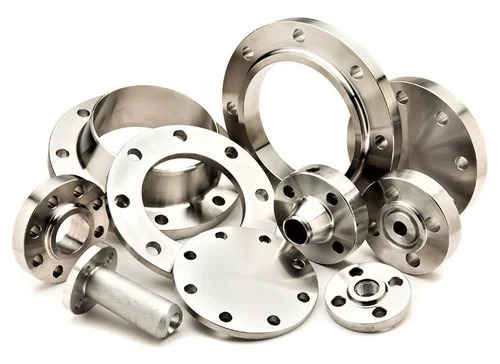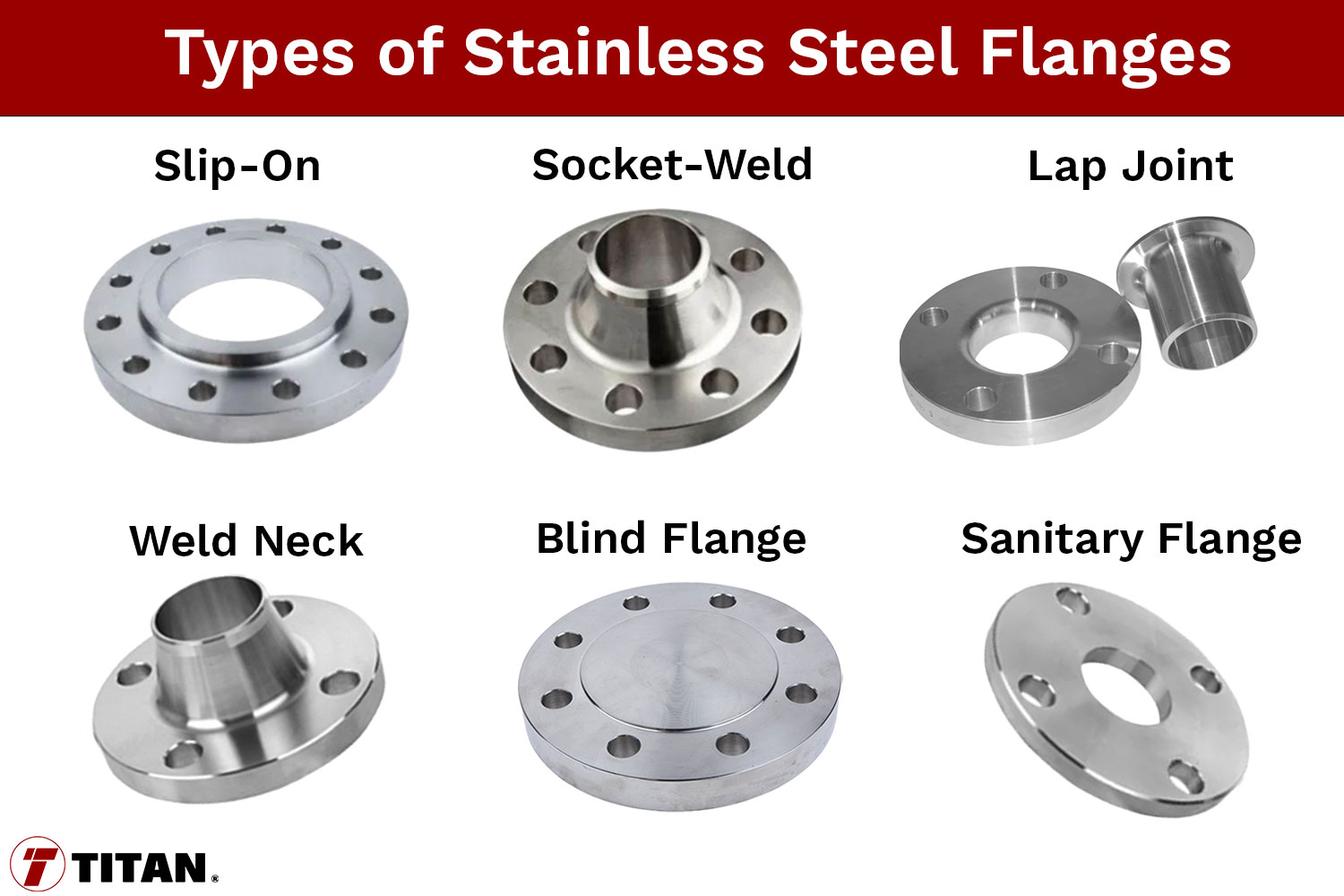A Comprehensive Guide to Flange Basics
A Comprehensive Guide to Flange Basics
Flanges are essential components in piping systems, connecting pipes, valves, and other equipment to create a secure and leak-proof connection. These circular fittings allow for easy assembly and disassembly, making maintenance and inspection more manageable. Flanges can be bolted or welded together, depending on the application and requirements. In some cases, such as with sanitary flanges, a gasket is used to ensure a tight seal. Available in a wide range of materials—like carbon steel, stainless steel, and others—flanges are designed to meet the demands of different environments and industries. This guide will explore the basics of flanges, their uses, types, and importance in modern infrastructure.
Usage of Flanges
Flanges serve multiple purposes in piping networks, from joining pipes securely to preventing leaks and ensuring smooth fluid flow. They provide a stable surface for sealing and help distribute loads evenly across the system, enhancing structural integrity. By incorporating valves or other flow control devices, flanges play a key role in managing and directing fluid movement. Their versatility makes them indispensable in sectors like manufacturing, petrochemicals, and plumbing. Whether it's for high-pressure systems or delicate sanitary applications, flanges are vital for creating safe and efficient connections in piping systems.

Flanges' Significance in Plumbing & Piping
In industrial and residential plumbing systems, flanges are critical for assembling and maintaining reliable pipe connections. They prevent leaks in high-pressure environments and ensure that fluids move safely and efficiently through the system. The use of flanges enhances the overall performance of piping networks by allowing for easy access and maintenance. Whether it’s in a chemical plant, a water treatment facility, or a home plumbing setup, flanges are an essential component that ensures safety, durability, and efficiency.
Understanding the different face types and materials is crucial for selecting the right flange for your application. For example, stainless steel flanges are often chosen for their corrosion resistance and long lifespan, especially in harsh environments like petrochemical projects. Adherence to industry standards such as ASME and ASTM ensures quality and compatibility, making it easier to integrate flanges into various systems.
Examining Flange Varieties: An In-Depth Look
There are numerous types of flanges, each designed for specific applications and conditions. Standards such as those set by the American Society of Mechanical Engineers (ASME) and the American Society for Testing and Materials (ASTM) help ensure consistency and reliability in piping systems. Additionally, flanges used in hydraulic applications must comply with SAE J518 and ISO 6162 standards. Understanding these standards is important when selecting the right flange for a particular system.

1) Slip-On Flanges
Slip-on flanges are popular due to their ease of installation and cost-effectiveness. These flanges slide over the pipe end before being welded in place, making them ideal for applications where quick assembly is needed. They are commonly used in low to medium pressure and temperature environments. While they are not as strong as other flange types like weld neck flanges, slip-on flanges offer a good balance between affordability and performance, making them a practical choice for many industrial settings.
2) Socket-Weld Flanges
Socket-weld flanges are typically used in smaller diameter, high-pressure piping systems. They are designed to fit snugly over the pipe end and are then welded in place, providing a strong and durable connection. These flanges are ideal for applications where minimal turbulence and leakage are critical, such as in chemical and steam systems. Their design allows for smooth fluid flow and reduces the risk of contamination, making them a preferred choice in sensitive environments.
3) Lap Joint Flanges
Lap joint flanges are particularly useful in systems that require frequent disassembly and maintenance. They consist of two parts: a stub end and a flange. The stub end is welded to the pipe, while the flange slides over it, allowing for easy alignment and rotation. This feature makes lap joint flanges ideal for complex piping systems where accessibility is important. They are also cost-effective, as only the stub end needs to match the pipe material, reducing the need for expensive flange materials.
4) Weld Neck Flanges
Weld neck flanges are known for their strength and reliability, making them suitable for high-pressure and high-temperature applications. They are commonly used in chemical processing plants, power generation facilities, and construction sites. These flanges provide a smooth transition between the pipe and the flange, reducing stress and improving the longevity of the connection. Available in various configurations, including standard, extra-long, and integral types, weld neck flanges are versatile and ideal for demanding industrial environments.
5) Blind Flanges
Blind flanges are solid discs used to close off the end of a pipe, preventing the flow of fluids or gases. They are widely used in water systems, chemical plants, and construction projects. Blind flanges are essential during pipeline testing and for extending existing systems. They come in various materials, such as A36 steel and stainless steel, to suit different environmental conditions. Proper installation involves ensuring a clean pipe end and securing the flange with bolts to create a tight, leak-proof seal.
6) Sanitary Flanges
Sanitary flanges are specifically designed for industries where cleanliness and sterility are crucial, such as pharmaceuticals, biotechnology, and food and beverage production. These flanges are engineered to allow for easy cleaning and inspection, helping maintain hygiene standards. Their smooth, non-porous surfaces prevent the buildup of bacteria and contaminants, ensuring product integrity. Sanitary flanges adhere to strict industry standards like 3-A Sanitary Standards and ASME-BPE, making them ideal for sensitive applications where safety and quality are top priorities.
Frequently Asked Questions
What are flanges?
Flanges are ring-shaped fittings used to connect pipes, valves, pumps, and other equipment in a piping system. They provide a secure and leak-proof connection while allowing for easy access for cleaning, inspection, or modification.
How do I choose the right stainless steel flange for my application?
Selecting the right flange depends on several factors, including the size and type of the pipe, operating pressure and temperature, the nature of the fluid being transported, and the environment. Stainless steel flanges are ideal for corrosive or high-temperature environments due to their superior resistance. However, carbon steel may be more cost-effective for less aggressive conditions. Consider factors like weldability, maintenance, and industry standards when making your choice.
How are flanges installed?
Flanges are typically installed by aligning them on either end of the pipes, inserting a gasket between them, and securing the assembly with bolts. The exact process can vary depending on the flange type and the application, but proper alignment and torque are essential for a secure and leak-free connection.
Conclusion
Flanges are a fundamental part of modern piping systems, playing a crucial role in ensuring secure, leak-proof connections across a wide range of industries. From slip-on and socket-weld flanges to blind and sanitary types, each has its own unique advantages and applications. The versatility of flanges in terms of materials and designs makes them adaptable to various environments and requirements. This guide highlights the importance of understanding flange types and their proper use, emphasizing their critical role in maintaining the integrity, efficiency, and safety of global piping networks.
Shop all flanges
Open Ended Pu Timing Belt,Trapezoidal Toothed Synchronous Belts,Trapezoidal Tooth Synchronous Belt,Open Ended Timing Belt
Jiangsu Bailite Transmission Technology Co., Ltd , https://www.zsindustrialbelt.com